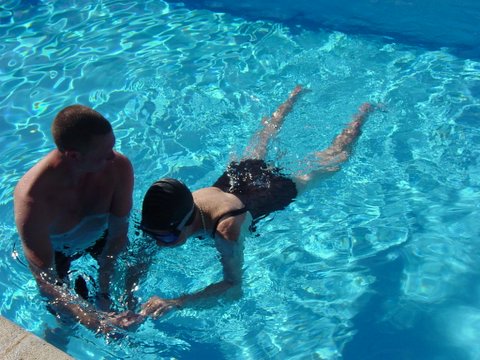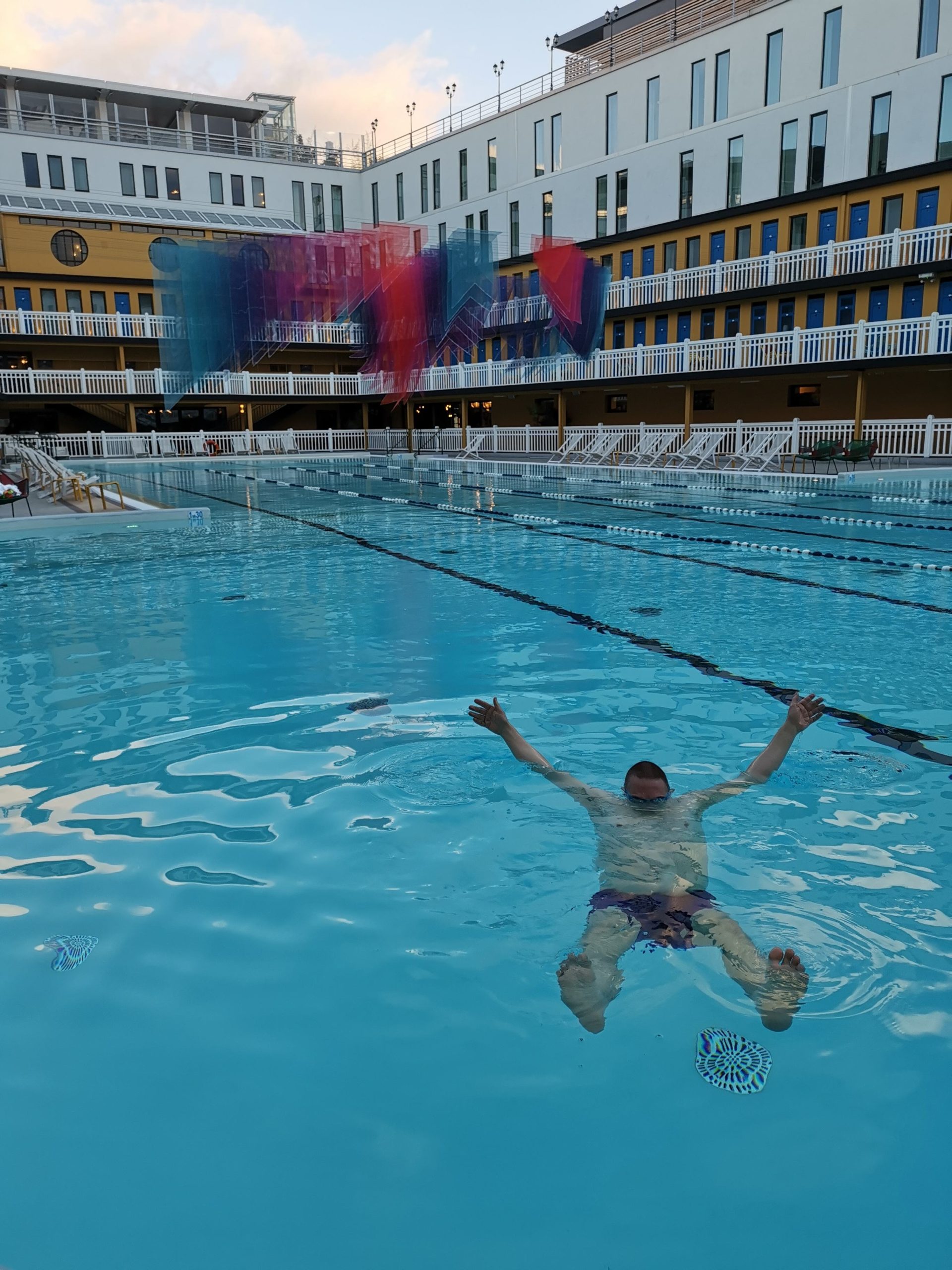Being in water is a great opportunity to reduce unnecessary tension, to release and expand, to let things happen.
The Alexander Technique is invaluable for people with any kind of difficulty in the water. Swimming problems almost always go back to balance and breathing. We help you become more at home in water by focusing on what’s happening with the coordination of your head, neck and back.
You can give yourself time to say ‘no’ to rushing into movement in a tense, fearful way so that…
- Something more natural and free can happen
- you can give your body chance to breathe, instead of taking a panicky, deep breath and holding it when you go underwater.
- you can be like a thing that swims, instead of a wooden human being, trying too hard to get things right
Learn Not to Swim
“All strenuous exercise will reinforce the existing coordination of the body or the lack of it. The amount of mal-coordination present and the strenuousness of the exercise will determine the good or harm that will result. ” Patrick MacDonald, The Alexander Technique As I See It.
Being in water is a great opportunity to reduce unnecessary tension, to release and expand, to let things happen. But working on swimming technique – the competitive strokes – does tend to move us away from the realm of non-doing; from just making discoveries about ourselves in water. Whether you’re a non-swimmer or a swimmer, if you’d like to explore the benefits of floating around and working with very simple movements, we can help you learn NOT to swim!
Think how you might want to be when visiting a thermal spa instead of swimming up and down in a leisure centre. Also consider what children do when left to their own devices. They spend hours underwater, developing a feel for it through play. It’s never about swimming lengths, until they join a club.

Calm, warm water is an ideal medium to support non-doing work. Yes, competitive strokes may be swum with aesthetically pleasing grace and swimming can be a great form of exercise. But, out of a belief in the benefits of swimming for exercise which we hear so much about, too many of us swim, and count, lengths with too little awareness of what we’re actually doing. Many recreational and fitness swimmers persistently pull their heads back, gasp for breath and strain their backs.
For success in applying the Alexander Technique in water, less is more. Because we’re land mammals after all, it may be sensible to question the celebrated benefits of swimming lengths as a main form of exercise. The benefits of floating around and allowing the water to support us, on the other hand, are generally not well enough appreciated.

